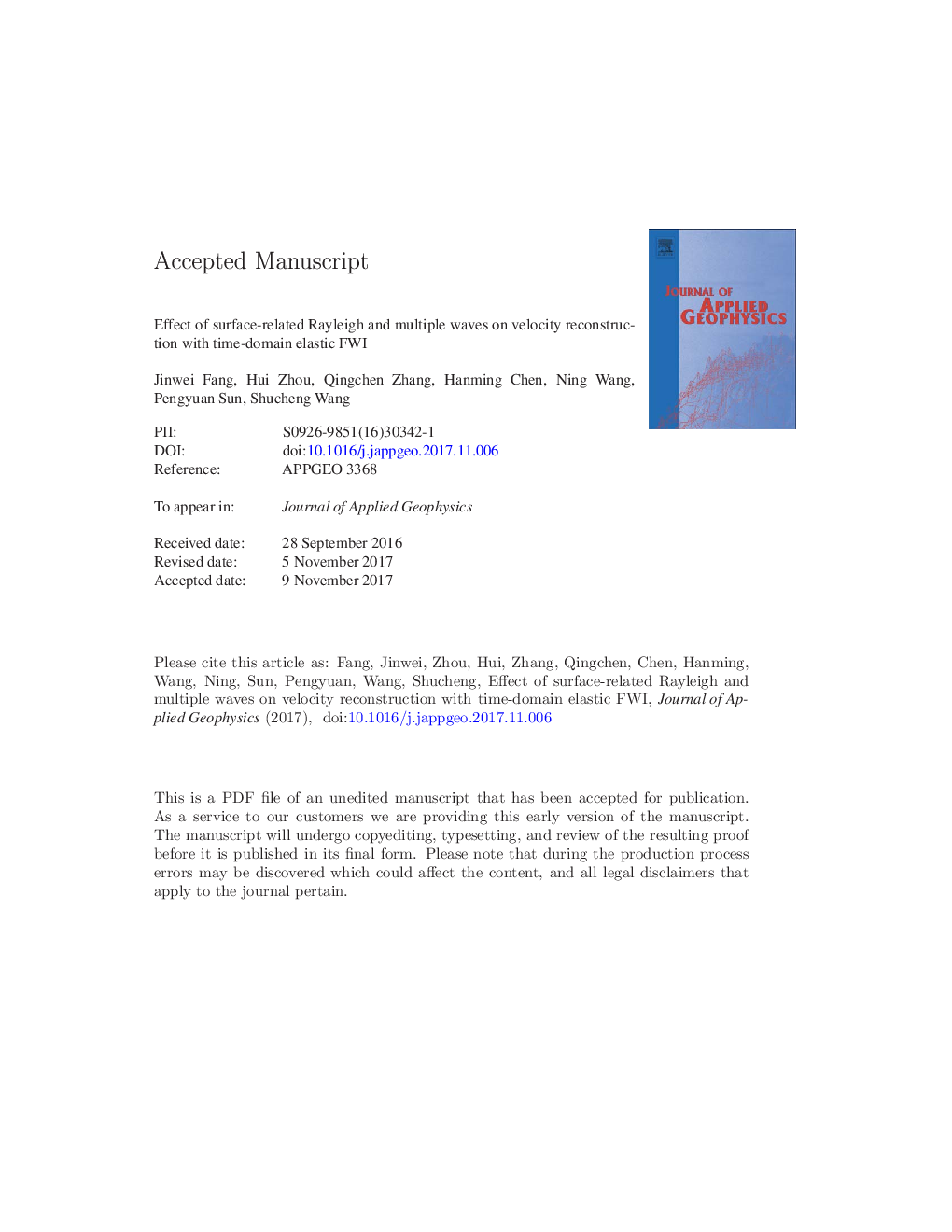| Article ID | Journal | Published Year | Pages | File Type |
|---|---|---|---|---|
| 8915537 | Journal of Applied Geophysics | 2018 | 33 Pages |
Abstract
It is critically important to assess the effectiveness of elastic full waveform inversion (FWI) algorithms when FWI is applied to real land seismic data including strong surface and multiple waves related to the air-earth boundary. In this paper, we review the realization of the free surface boundary condition in staggered-grid finite-difference (FD) discretization of elastic wave equation, and analyze the impact of the free surface on FWI results. To reduce inputs/outputs (I/O) operations in gradient calculation, we adopt the boundary value reconstruction method to rebuild the source wavefields during the backward propagation of the residual data. A time-domain multiscale inversion strategy is conducted by using a convolutional objective function, and a multi-GPU parallel programming technique is used to accelerate our elastic FWI further. Forward simulation and elastic FWI examples without and with considering the free surface are shown and analyzed, respectively. Numerical results indicate that no free surface incorporated elastic FWI fails to recover a good inversion result from the Rayleigh wave contaminated observed data. By contrast, when the free surface is incorporated into FWI, the inversion results become better. We also discuss the dependency of the Rayleigh waveform incorporated FWI on the accuracy of initial models, especially the accuracy of the shallow part of the initial models.
Related Topics
Physical Sciences and Engineering
Earth and Planetary Sciences
Geophysics
Authors
Jinwei Fang, Hui Zhou, Qingchen Zhang, Hanming Chen, Ning Wang, Pengyuan Sun, Shucheng Wang,
